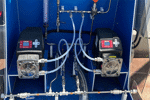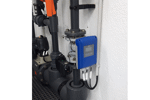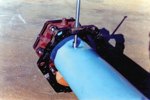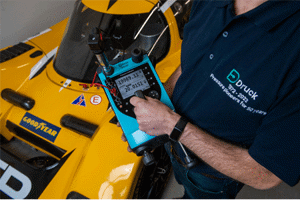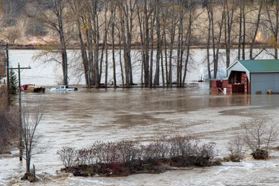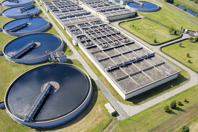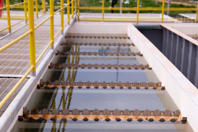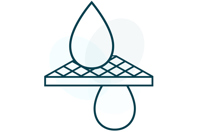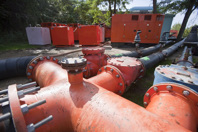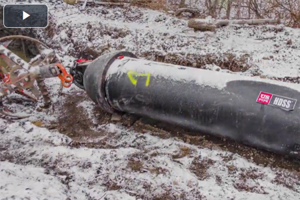WASTEWATER
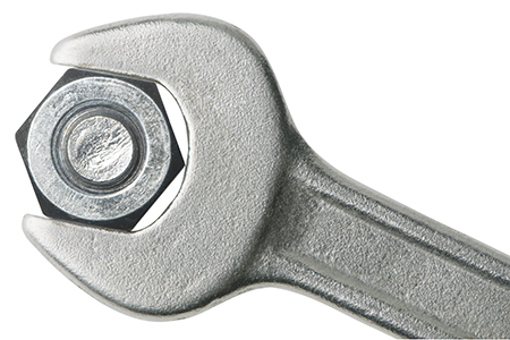 Retrofitting Aging Infrastructure: Seamlessly Integrating Jet Aeration Into Existing Tank Designs
Retrofitting Aging Infrastructure: Seamlessly Integrating Jet Aeration Into Existing Tank Designs
Jet aeration retrofits modernize aging wastewater tanks with minimal downtime, integrating easily into existing basins while delivering long-term reliability, higher oxygen transfer efficiency, and significantly lower lifecycle costs.
WASTEWATER CASE STUDIES AND WHITEPAPERS
-
How Calibration Impacts Flow Meter Performance
Utility managers and operators rely on flow meters to provide critical information for process monitoring and control. They require and fully expect the flow data to be accurate and reproducible.
-
What Happens After The BMP Is Installed? The demand for stormwater treatment is rising at an increasingly accelerated rate as the Environmental Protection Agency Regulatory demands become more stringent. These regulations have provided the way for emerging technologies to meet the environmental needs, from Land Based to proprietary products. By Jeffrey Benty & Dino Pezzimenti
-
How To Maximize Microbrewery Production Lines
A microbrewer’s expertise is in brewing, not engineering. Discover how you can get the most out of production lines without the costs associated with hiring outside engineers or experts.
-
Disneyworld Hong Kong Kept Clean By Headworks® MS Sereis Bar Screens
Children around the world dream of playing with Mickey Mouse or visiting Sleeping Beauty in her castle. This dream became a reality for many children in Asia last year with the opening of Walt Disneyland Hong Kong.
-
Earth Day: Alabama's Iron And Steel Manufacturing Contributes To Our Environment
I was in fifth grade on the first Earth Day. There was an abandoned earth mover in the woods near my elementary school, and Mrs. Fields’ social studies class painted it with bright colors to improve our visual environment. It was 1970, Richard Nixon was President, and later that year he would establish the Environmental Protection Agency.
Little did I know then that Earth Day is about science, there are economics within environmentalism, and I would have a career promoting stewardship of the earth.
-
A Wastewater Solution With Low Capital Costs
Along the Indian River Lagoon adjacent to Vero Beach, Florida, both residents and government officials were becoming increasingly concerned about excessive nutrient loads and pollution.
-
Automated Self-Cleaning Trashracks Proves Reliable In Harshest Storm Conditions
Prior to the installation of the Duperon Self-Cleaning Trashrack at their intakes, the City of Dallas Hampton Road Pump Station operated without any protection in front of their stormwater grating. “We just had a grate in front with no mechanical cleaning,” remembers Dhruv Pandya, District Manager for the City of Dallas Department of Flood Control. “The pumps were suffering. They were continually getting clogged, and they didn’t have enough water coming in to function properly.”
-
KLa Slot Injector Aeration System For CFAS Process Touch Panel Manufacturing Plant Wastewater Treatment
The plant manufactures touch panel and polarizer which are materials for LCD assemblies. Since the manufacturing process is a semiconductor process, the wastewater contains large quantities of organic solvent from developers, strippers and rinse liquid waste. By KLa Systems
-
TASKMASTER® Multi-Stage Shredding System for Pharmaceutical Plant Security
A pharmaceutical manufacturer was faced with major waste management concerns. They urgently needed a powerful shredding system capable of quickly and efficiently reducing bulky pharmaceutical rejects, packaging and literature to an unrecognizable condition. The company had recently purchased shredding equipment to replace older units, which were failing, but soon encountered unexpected problems. Pharmaceutical material passing through the carbon steel shredders often contained corrosive chemicals, which eventually eroded the units.
-
Wastewater Treatment Plant Makes A Successful Switch From UV To PAA To Disinfect Effluent
Read about a wastewater treatment plant whose UV system was unable to reliably meet mandated disinfection requirements, and why it opted to switch to a chemical treatment solution.
WASTEWATER APPLICATION NOTES
-
Improved Efficiencies In TOC Wastewater Analysis For Standard Method 5310B And EPA Method 415 Total organic carbon (TOC) measurement is of vital importance to the operation of water treatment due to organic compounds comprising a large group of water pollutants. TOC has been around for many years, and although it is a relatively simple analysis in theory, operational efficiency is paramount.
-
Ultrasonic Level Measurement In Water And Wastewater Plants
Radar technology is often viewed as the “best” method of level measurement, but this isn’t necessarily true in the water industry.
-
Ion Exchange Resins Reduce Pollution From Refineries
A single operational oil and gas refinery produces millions of gallons of contaminated wastewater a year, leading to environmental pollution concerns. Ion exchange resins are a metal- and ion-removal solution to help clean this wastewater for plant reuse or safe disposal. This application guide explains how resins can be used to demineralize refinery water in process, boiler, and cooling water applications.
-
Dosing Of Sodium Hypochlorite Solution For Drinking Water Disinfection
A water purveyor was in urgent need of a chemically resistant flow instrumentation with a long life of service that allowed reliable and long-term stable dosing of the sodium hypochlorite solution.
-
Application Bulletin: Reverse Osmosis
Osmosis is the phenomenon of lower dissolved solids in water passing through a semi-permeable membrane into higher dissolved solids water until a near equilibrium is reached
-
Pipe Repair On A Budget
A new pipe-repair solution promises to save time and money, while also being sustainable, long-lasting, fully scalable, and safe for workers.
-
What Are You Doing To My Pipe: Can PVC Pipe Be Loaded?
The argument has been used that PVC pipe is delicate and can’t be subjected to any kind of loading. In EBAA's years of testing we have found that is not the case at all. PVC can take an extreme amount of strain.
-
A Comparative Study Of On-Line And Laboratory TOC Analyzers For Analysis Of Municipal Wastewater
This application note presents comparative data obtained on influent and effluent wastewater samples using laboratory and on-line TOC analyzers employing the heated sodium persulfate oxidation technique in USEPA-approved methods 415.3 and SM 5310C.
-
Textile Wastewater Treatment — An Application To Sustainably Reuse Water In The Textile Industry
The textile industry is a water consumption intensive industry. Water is utilized for cleaning the raw material, and for the different steps in the textile dyeing process. Due to the effects of water scarcity and stricter environmental regulations, the cost of fresh water utilization has increased worldwide.
LATEST INSIGHTS ON WASTEWATER
-
In areas with storm drains, the water can quickly overwhelm the drains, causing flooding hazards. For this reason, many towns have ordinances dictating how much ground can be covered with impermeable substrates.
-
Technology like advanced process control systems can streamline operations, create opportunities to lower costs and emissions, and ensure effluent quality meets the highest standards. Research also indicates that implementing an appropriate control strategy can help reduce N2O emissions.
-
Strategic flow monitoring helps wastewater utilities curb overflows, cut costs, and safeguard public health by turning accurate data into proactive action.
-
When seeking bids for a fair comparison, it’s important to evaluate the total cost of ownership.
-
Researchers have developed polyimide-based membranes for membrane distillation (MD) that overcome three persistent issues in membranes for water treatment and gas separations: the need for pore-forming chemicals that prevent recycling, performance degradation due to pore wetting and fouling, and the inherent trade-off between high water flux and selectivity.
-
As technology improves and becomes more accessible, outdated municipal wastewater systems are fast beginning to show their age. Today, water pumps come in a variety of designs that enable uses that previous generations could only have dreamed of.







